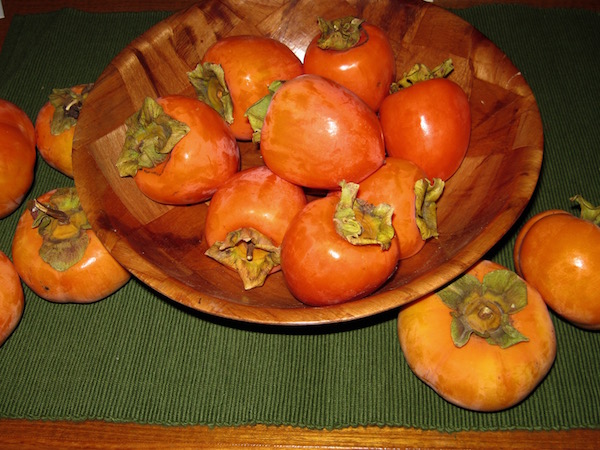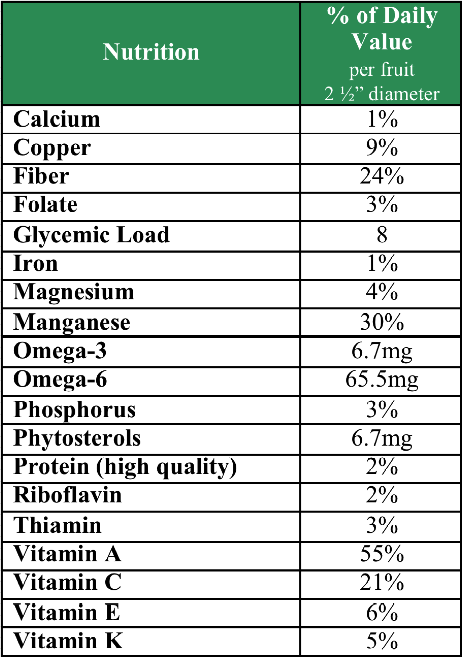 Most people underestimate the nutritional value of Persimmons.
Most people underestimate the nutritional value of Persimmons.
Persimmons are a strange fruit. In late Fall in Northern California, you can find this plump fruit dangling from bare tree limbs, hanging on as if afraid to let go. Persimmons have a delicately mild sweet flavor and a firm apple-like consistency (Fuyu variety) or a soft and stringy texture (Hachiay variety). Until recently, I didn’t pay much attention to the potential value of their nutrients, being prejudice against their unusual textures and lack of distinct robust flavor. However, upon urging from my daughters and the generosity of my mother-in-law’s bountiful trees, we have incorporated this fruit into our Fall diet this year. Much to my surprise, Persimmons have become a wonderful complement to our plant-based meals.
This seasonal fruit holds a amazing amount of healing nutrients. Persimmons are:
- An excellent source of fiber (both soluble and insoluble) – Fiber is important in regulating and maintaining a healthy colon, lowering cholesterol, controlling blood sugars, and maintaining a healthy weight.
- High in manganese – Manganese is an important trace mineral that supports healthy bone formation, plays a role in producing collagen that creates healthy skin, and functions as an antioxidant that helps protect skin against oxygen related damage and ultraviolet light. Manganese also helps protect your body against free radical damage in the fight against cancer.
- An exceptional source of Vitamin A – Similar to Manganese, Vitamin A plays an important role in bone health. However, it is also essential in supporting healthy vision, reproduction and immune system. Vitamin A also assists your skin and mucous membranes to repel bacteria and viruses.
- A significant source of Vitamin C – We all know the important role Vitamin C plays in wound healing and supporting a healthy immune system. But it also strengthens blood vessel walls and helps the body to effectively use carbohydrates, fats and protein.
- Packed with phytonutrients, flavonoids, and antioxidants – Persimmons contain the following:
- Tannins gallocatechin and catechins that assist in preventing cellular oxidative damage and reduces blood pressure and serum lipid levels
- Betulinic acid and shibuol that target and dissolve cancerous tumors
- Lutein and Zeaxanthin that actually absorbs into the eyes to help filter light and protect them against cataracts
- Fisetin that supports the eradication of colon and prostate cancer cells
Check out the nutrient facts:
Persimmons, when ripe, have an orangey-peach color and a mild sweet flavor. The two varieties most commonly found in the United States are the Fuyu and Hachiya.
The Fuyu persimmon, shaped like a large squashed tomato, remains hard when ripe and is best enjoyed raw and can be eaten like an apple.
The Hachiay persimmons, shaped like a large acorn, is the most common variety. They become extremely soft and a bit stringy when ripe. They are perfect for adding to baking recipes or smoothies.
Next time you’re at the store, pick up a few of each variety and try one of these recipes:
Fuyu Persimmon
- Sprinkle sliced Fuyu with lime or lemon juice, salt, and a pinch of chili powder for a refreshing snack.
- Top your salad greens with chopped Fuyu, pomegranate seeds, mandarin slices and a light oil & vinegar dressing.
- Try one of these delicious salads:
- Cookin Canuck’s Spinach salad with Fuyu persimmon
- Vegetarian Time’s Persimmon salad with toasted walnuts and dried cranberries
Hachiay Persimmon
- Enjoy persimmon sorbet – cut off the pointed tip of the fruit then freeze. When frozen, let defrost for an hour or two until soft enough to scoop out. You can eat spoonfuls straight from the peel like a bowl of ice cream or put in the blender with a dash of cinnamon and nutmeg.
- Blissful Basil’s Persimmon chia pudding
- Joan Morais’ Vegan persimmon bread

